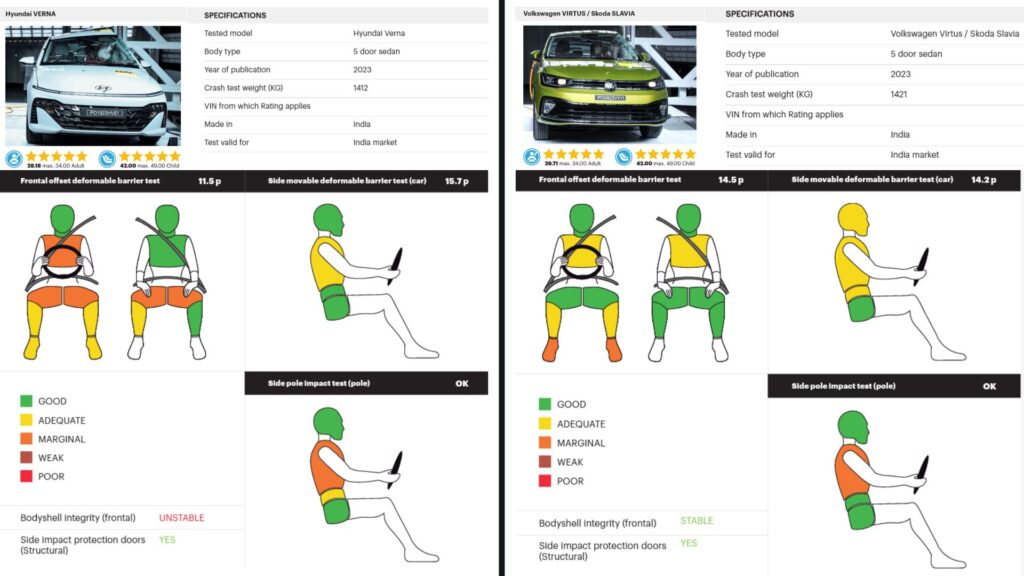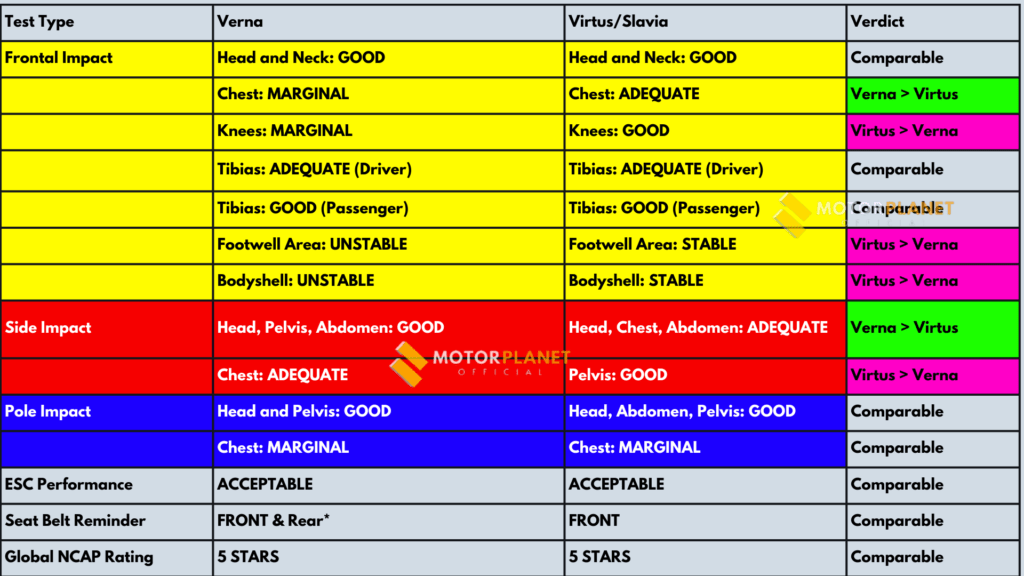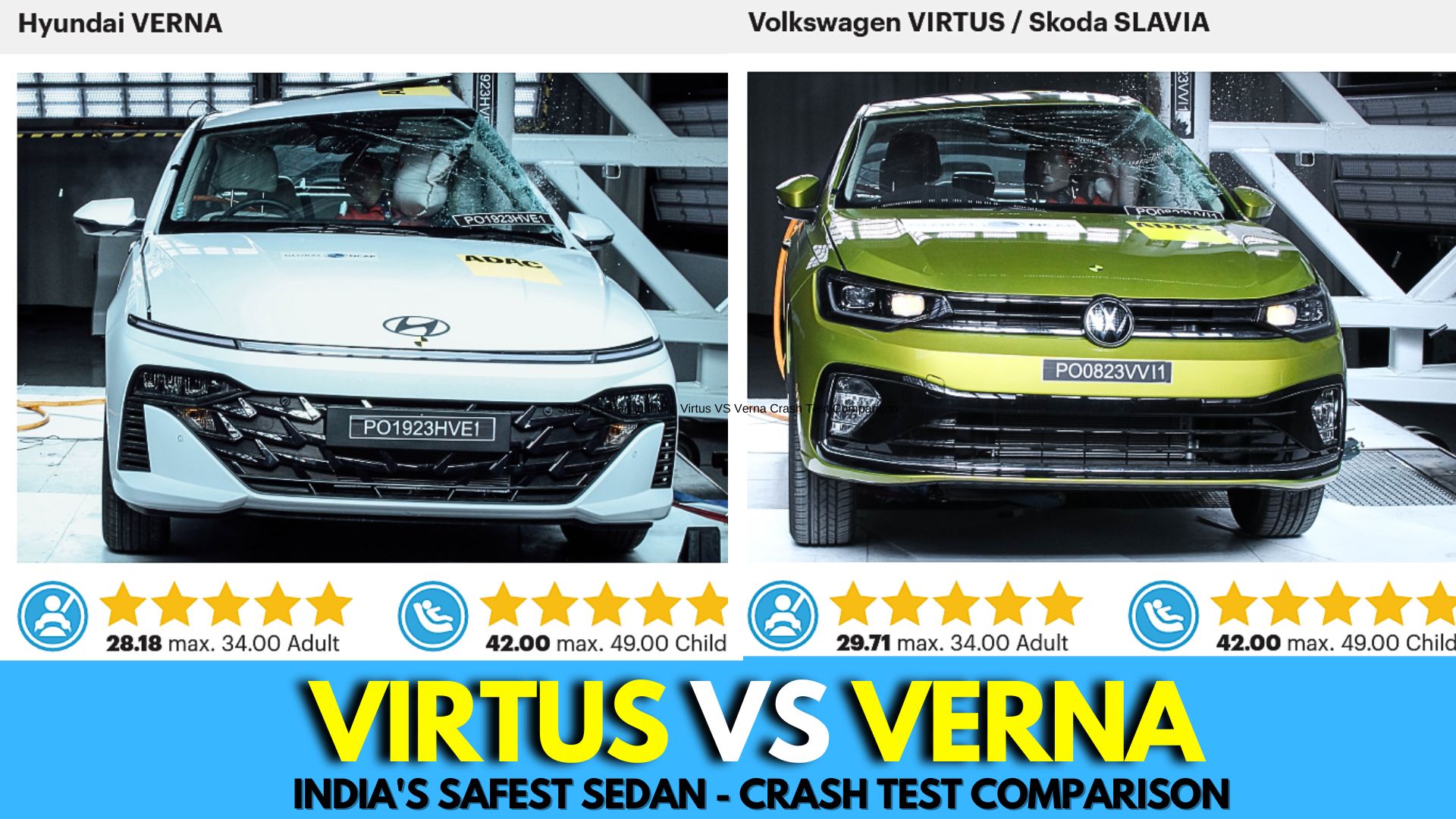In the battle between Korean and German sedans, Hyundai’s Verna challenged the Volkswagen Virtus / Skoda Slavia for the title of the safest sedan in India. Hyundai made a bold move by introducing a potent 1.5 Turbo GDI engine, boasting superior power and torque figures on paper compared to the Virtus and Slavia. What tipped the scales further was Verna’s impressive performance in the Global NCAP crash test, securing a coveted 5-star safety rating. The result? The new Hyundai Verna has achieved a remarkable 5-star safety rating, making it the “first Hyundai vehicle in India” to receive such a high safety rating.
This has disrupted the status quo, as Volkswagen and Skoda used to market their Virtus and Slavia as the safest sedans in India. But, hold on a minute! The race isn’t over yet because the Virtus won’t give up easily. Let’s dive into the key difference between the two tested models that you should be aware of.
Here are the key differences between the tested models that you should know:
The base model of the Virtus/Slavia, which was previously tested by Global NCAP, came equipped with only 2 airbags ( for the frontal impact and side impact test ). In contrast, Hyundai’s Verna base variant set itself apart by offering 6 airbags(for all tests) as standard. It’s worth noting that the Virtus/Slavia might have scored even better points ( in the frontal impact and side impact test ) if it had included 6 airbags, like the Verna.
Vehicles equipped with a higher number of airbags, especially those covering various areas such as front, side, curtain, and knee airbags, tend to score higher in crash tests. This is because multiple airbags provide better protection to different body parts, reducing the risk of injury.

Here’s a side-by-side differentiation of the safety test results for the Virtus and Verna

Based on the information provided in the table, it appears that the Volkswagen Virtus performs slightly better than the Hyundai Verna in the crash test results, particularly in the Side Impact and Pole Impact tests.
Moreover, The number of airbags can significantly impact the safety performance of a vehicle in crash tests. If the tested model of the Volkswagen Virtus had been equipped with 6 airbags like the Hyundai Verna, it’s possible that the safety ratings could have been even better for the Virtus( in the frontal impact and side impact test ), especially in scenarios where airbags play a crucial role in protecting occupants.
Conclusion
Both the Virtus and Verna received 5-star safety ratings from Global NCAP, but there are notable differences in specific safety aspects. The Virtus generally demonstrates better chest protection in frontal and side impacts, a stable footwell area, and a bodyshell capable of withstanding further loadings. However, the Verna provides better head and neck protection in side pole impacts. It’s essential to consider these differences when evaluating the safety performance of each vehicle.

